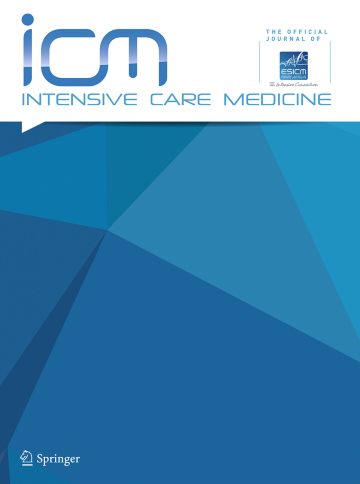急性脑损伤PEEP的病理生理及临床应用。
IF 21.2
1区 医学
Q1 CRITICAL CARE MEDICINE
引用次数: 0
摘要
机械通气是急性脑损伤患者维持气道通透性、优化气体交换、预防继发性脑损伤所需的一种维持生命的治疗方法。呼气末正压(PEEP)是机械通气的关键组成部分,有助于防止肺不张,改善氧合,稳定肺泡再补充,在肺保护方面具有潜在的益处。然而,脑损伤患者对PEEP的神经耐受性较差。肺和胸壁弹性、肺恢复能力、心功能和体液状态的可变性,以及大脑自动调节的完整性,进一步使对这类患者的PEEP安全范围的建议复杂化。本文旨在探讨PEEP对脑-心肺相互作用的生理影响,重点探讨PEEP对颅内压、脑灌注压以及脑灌注的直接和间接影响。我们还讨论了个性化机械通气设置的必要性,以平衡PEEP对呼吸的益处及其对脑灌注的潜在不利影响。本文章由计算机程序翻译,如有差异,请以英文原文为准。
Pathophysiology and clinical applications of PEEP in acute brain injury.
Mechanical ventilation is a life-sustaining treatment needed in patients with acute brain injury to maintain airway permeability, optimize gas exchange, and prevent secondary brain damage. Positive end-expiratory pressure (PEEP), a key component of mechanical ventilation, helps prevent atelectasis, improve oxygenation, and stabilize alveolar recruitment, offering potential benefits in terms of lung protection. However, neurological tolerance of PEEP can be poor in brain-injured patients. The variability in lung and chest-wall elastance, lung recruitability, cardiac function, and fluid status, as well as the integrity of cerebral autoregulation, further complicates the recommendations for the safe range of PEEP in this patient population. This review aims to explore the physiological effects of PEEP on the brain-heart-lung interplay, focusing on the direct and indirect influences of PEEP on intracranial and cerebral perfusion pressures, as well as cerebral perfusion. We also discuss the need for individualized mechanical ventilation settings to balance the respiratory benefits of PEEP against its potential adverse effects on cerebral perfusion.
求助全文
通过发布文献求助,成功后即可免费获取论文全文。
去求助
来源期刊

Intensive Care Medicine
医学-危重病医学
CiteScore
51.50
自引率
2.80%
发文量
326
审稿时长
1 months
期刊介绍:
Intensive Care Medicine is the premier publication platform fostering the communication and exchange of cutting-edge research and ideas within the field of intensive care medicine on a comprehensive scale. Catering to professionals involved in intensive medical care, including intensivists, medical specialists, nurses, and other healthcare professionals, ICM stands as the official journal of The European Society of Intensive Care Medicine. ICM is dedicated to advancing the understanding and practice of intensive care medicine among professionals in Europe and beyond. The journal provides a robust platform for disseminating current research findings and innovative ideas in intensive care medicine. Content published in Intensive Care Medicine encompasses a wide range, including review articles, original research papers, letters, reviews, debates, and more.
 求助内容:
求助内容: 应助结果提醒方式:
应助结果提醒方式:


